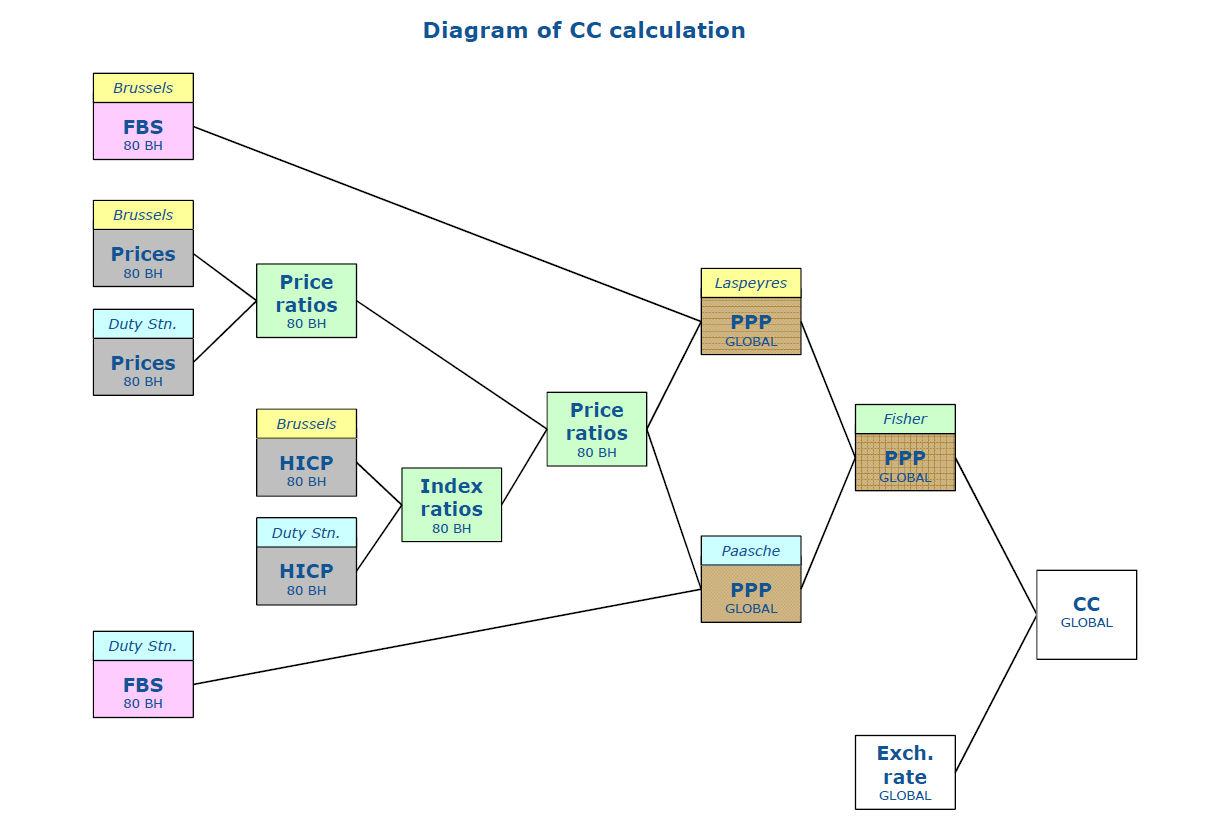Correction coefficients - Civil servants remuneration
Correction coefficients are percentages applied to remuneration of expatriate officials to adjust for differences in price level of consumer goods and services in the duty station (Intra-EU or Extra-EU) by reference to base city (Brussels).

Methodology
For Intra-EU duty stations, average prices are taken from the annual surveys conducted under the European Comparison Programme to establish multilateral purchasing power parities for national accounts purposes under the 2007 PPP Regulation. These prices are used to establish bilateral parities with Brussels for Article 64 purposes. The rolling cycle of surveys covers the full basket of consumer goods and services in three years and then repeats. In between surveys of the same type, prices are updated using detailed indices. Specific additional annual price data collections are done for estate agency rents, education (school fees) and hospital care. Periodic surveys of household consumption expenditure are coordinated amongst expatriate international officials. An anonymised recent version of the ECP product list is available at
For Extra-EU duty stations, average prices are taken from the non-EU countries participating in the European Comparison Programme (9 coordinated by Eurostat and 7 coordinated by OECD), and from the annual surveys conducted by the United Nations International Civil Service Commission (these cover 200 duty stations at least once during a cycle of five years). This work is done in accordance with an International Memorandum of Understanding signed in 2009. Over time, the Extra-EU item definitions have been increasingly harmonised with the Intra-EU ones.


